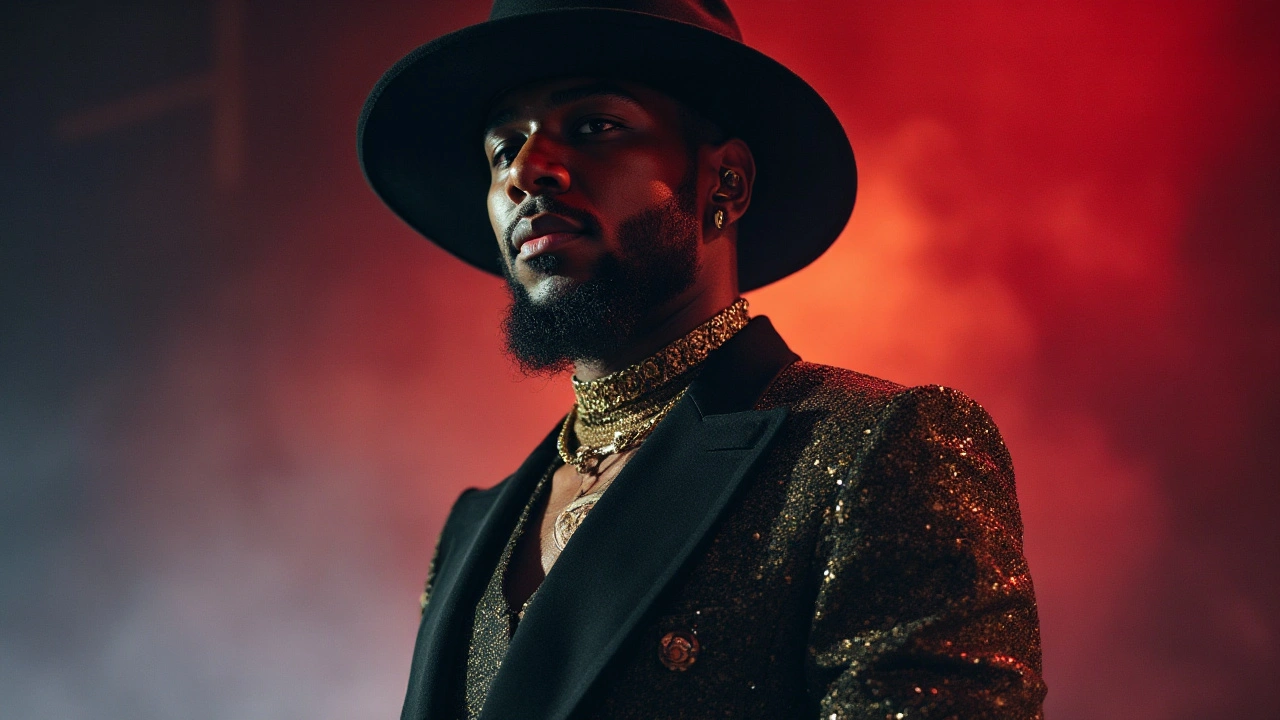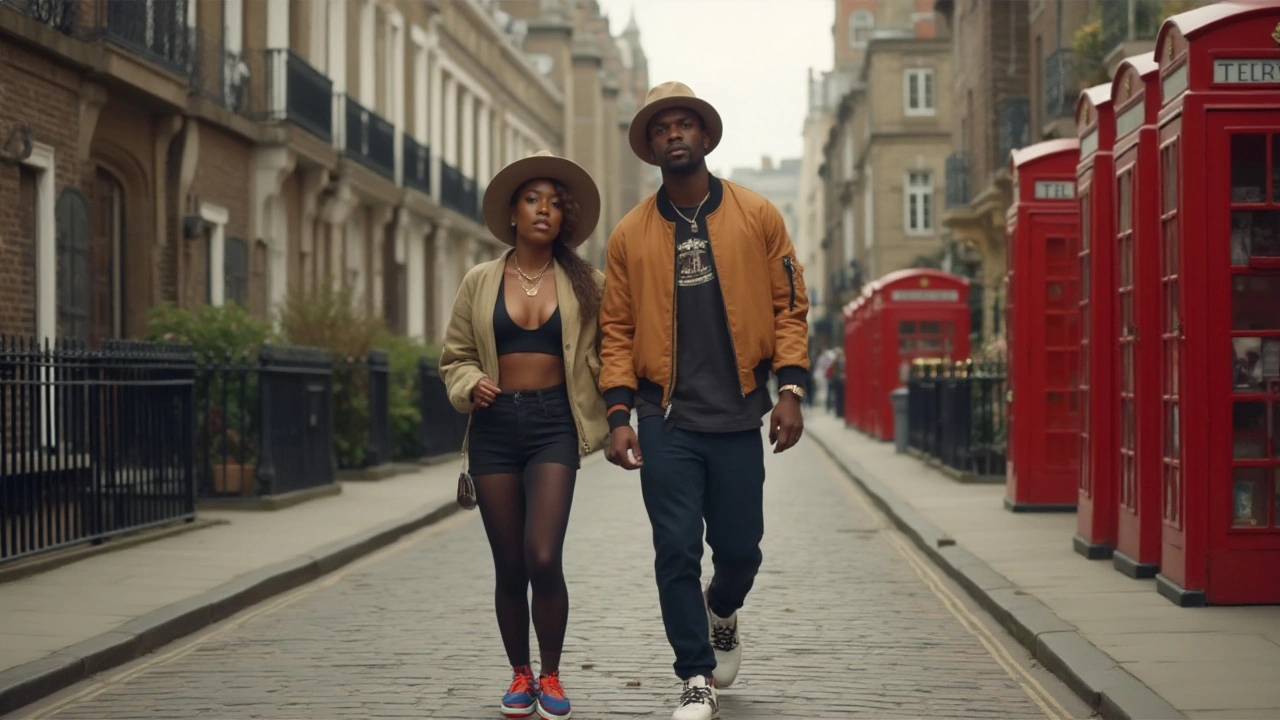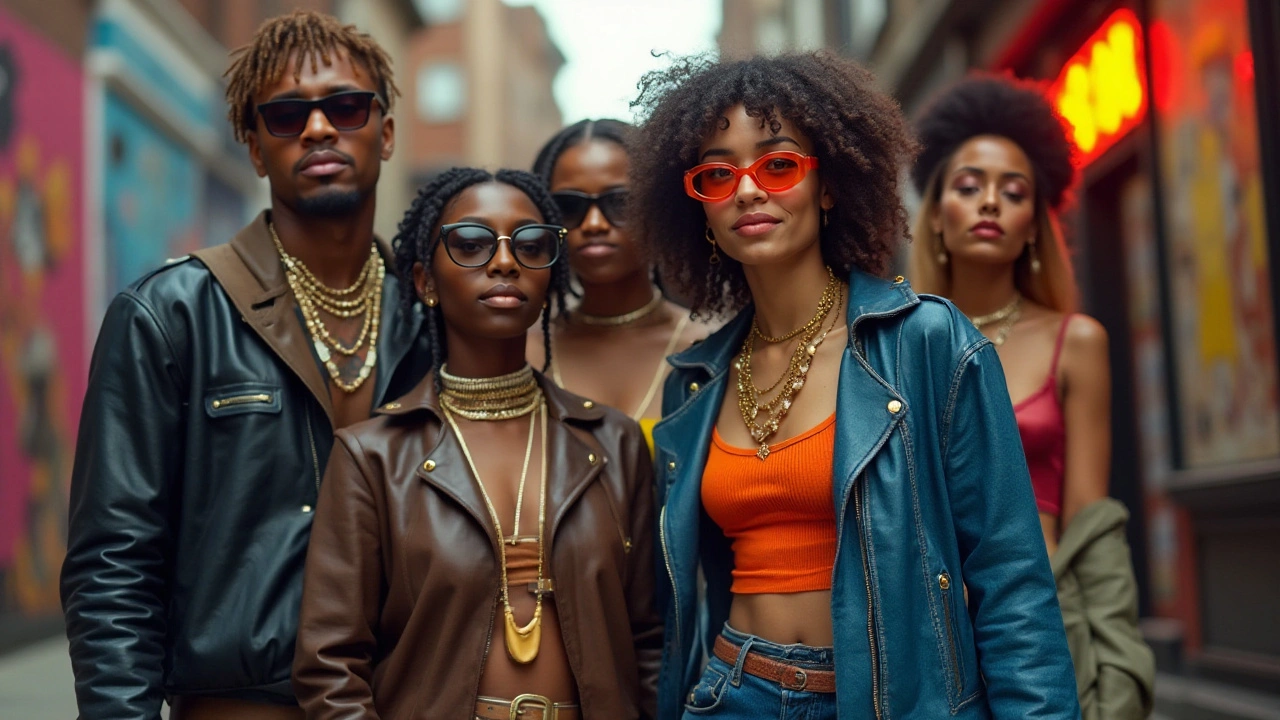Rhythm and Blues, often referred to as R&B, is more than just a musical genre. It is a cultural movement that has significantly influenced fashion trends over the decades. The synergy between music and fashion has never been more evident than in the attire and style choices that have emerged from this rhythmic influence.
As listeners groove to the sultry beats and emotive lyrics, they are often inspired to emulate the fashion statements of their favorite R&B artists. From tailored suits and shiny shoes of the past to the relaxed yet bold streetwear of today, R&B music continues to guide fashion evolution.
This exploration of the interconnectedness of R&B and fashion showcases how music can transcend auditory enjoyment to become a visual and stylistic force. Whether through award show red carpets or everyday street style, the influence of rhythm and blues resonates beyond notes and lyrics and into the fabrics and patterns that define trends.
- The Historical Roots of Rhythm and Blues
- Iconic R&B Artists and Their Fashion Statements
- The Evolution of R&B Fashion Through Decades
- R&B’s Influence on Modern Streetwear
- The Future of Rhythm and Blues in Fashion
The Historical Roots of Rhythm and Blues
The history of rhythm and blues is as rich and vibrant as the music itself, tracing its origins back to the African American communities of the early 20th century. R&B grew out of the blues, gospel, and jazz traditions, merging these influences to create a distinctive sound that encapsulated the struggles, joys, and stories of life in Black America. In the post-World War II era, economic and societal shifts led to the migration of African Americans to urban centers in the north, where their music found fertile ground. Cities like Chicago, New York, and Detroit became melting pots of musical innovation, giving rise to this new genre that would soon take the world by storm.
From the late 1940s into the 1950s, artists like Ray Charles, Ruth Brown, and Louis Jordan began to gain popularity. They were known for their innovative styles that blended elements from swing and electric blues with lyrics that resonated with the struggles of the common person. This was a time when record labels started to recognize the potential of rhythm and blues, giving voice to artists who had long been sidelined in the music industry. The rise of independent labels such as Atlantic Records and Chess Records was fundamental in this regard, opening doors for numerous artists who would go on to become legends.
"Music is the greatest communication in the world. Even if people don't understand the language that you're singing in, they still know good music when they hear it." - Lou Rawls
As R&B shifted from its blues roots to something more upbeat and rhythm-driven, it began to influence other genres significantly. Rock and roll, for one, owes its beginnings largely to rhythm and blues, with pioneering artists like Little Richard and Chuck Berry adapting the driving beats and electrifying performances. This influence extended beyond just the sound, affecting the cultural landscape significantly. The fashion statements of these performers, like Chuck Berry’s duckwalk and Little Richard's flamboyant outfits, left indelible marks not only on music but also in how fashion began to evolve in relation to the music scene.
The 1960s saw the golden era of R&B, often characterized by the sweet soulful sounds of artists like The Supremes and Marvin Gaye. This era was marked by a smooth integration of funk and pop elements, creating irresistible hits that dominated charts. Evidence of the far-reaching impact of R&B can also be seen in the British Invasion, where bands like The Rolling Stones and The Beatles drew heavily from American R&B sounds. This international exchange further solidified rhythm and blues as a pivotal force in shaping modern music.
While the music itself was the main attraction, the fashion stemming from R&B during its formative years cannot be overlooked. The sharp suits, opulent gowns, and slick hairstyles exemplified the style of the time and set a standard that would evolve with the music. R&B artists were among the first to introduce a fusion of street style with high fashion, a trend that persists today, appearing in everything from hip-hop fashion to contemporary streetwear.
The historical roots of R&B music demonstrate a journey of cultural expression and liberation. The genre's ability to evolve while staying true to its origins speaks volumes of its resilience and adaptability. Each phase in its history tells a story of transformation—musically, culturally, and visually—that resonates with its audience and beyond. Understanding where rhythm and blues have come from provides key insights into its enduring influence on not just the fashion industry but culture as a whole.
Iconic R&B Artists and Their Fashion Statements
The world of rhythm and blues has been blessed with some truly iconic figures, each leaving an indelible mark not only through their music but also their unique fashion choices. These artists have often wielded personal style as an extension of their musical persona, creating looks that define eras and inspire legions of fans. From the grandeur of the Motown era with its sharp suits and glitzy gowns to the laid-back, edgy styles seen in modern urban wear, R&B artists have run the style gamut with groundbreaking results.
Turning back the clock to the 1960s, we find Motown legends like The Supremes and Marvin Gaye at the forefront. The Supremes, with their polished ensembles of sequined dresses and elegant hairstyles, set a gold standard for girl groups. Their fashion choices were not just about looking good but were also about making a statement of sophistication and success that resonated with audiences worldwide. Gaye, on the other hand, was known for his suave style, often appearing in perfectly tailored suits that matched his smooth vocal delivery. His outfit choices spoke volumes, especially during performances, projecting a mix of class and edginess that became synonymous with his brand.
As the decades rolled on, the evolution of R&B fashion saw artists like Prince taking center stage. There was never a dull moment with Prince, whose daring choices in clothing challenged and redefined the norms. Whether it was the iconic purple ensembles or the risqué lace outfits, Prince’s fashion statements were a tapestry of rebellion and artistry. Just as impactful was the rise of street fashion, which saw artists like Mary J. Blige setting trends with her nuanced blend of urban chic and high fashion. Her look, often characterized by oversized coats, bold sunglasses, and thigh-high boots, became an emblem of 90s R&B culture.
Beyoncé and the New Wave of R&B Fashion
Fast forward to the present, and the torchbearers of R&B fashion include the likes of Beyoncé, whose attire both on and off stage ignites discussions in fashion circles. As an artist who understands the power of visual appeal, Beyoncé uses her clothes to amplify messages of empowerment, and she doesn't shy away from embracing her heritage through her style. Her Grammy appearances and music video outfits unveil a plethora of African-inspired prints and daring contemporary designers, paving the path for future artists to explore bold sartorial choices.
"Fashion is a part of my exploration process.” - Beyoncé
The influence of R&B style can also be seen in artists like Rihanna, known for her eclectic mix of streetwear and luxury fashion. By launching her fashion brand, she has further blurred the lines between music and fashion, reinforcing the significant role of R&B in shaping not just music culture but also fashion trends. As these artists push boundaries, they invite audiences to adopt a fearless approach to personal fashion, driving a dialog between music, identity, and style.

The Evolution of R&B Fashion Through Decades
Rhythm and Blues fashion has been a dynamic force in shaping cultural aesthetics right from its inception. The journey through the decades reveals a striking evolution that mirrors the music's own transformation. In the 1940s and 1950s, R&B was in its infancy, and fashion during this period often drew from jazz influences. Artists like Ray Charles and Etta James donned sophisticated and sharp clothing, with men favoring tailored suits and slick shoes while women opted for elegant dresses and classic hairstyles. This era was about sleekness and style, a reflection of an upward societal mobility among African American communities, who were pioneering this burgeoning genre.
As we moved into the 1960s and 1970s, the world saw monumental cultural shifts, and R&B was right at the heart of it. Civil rights movements and evolving social norms infused music and fashion with a rebellious edge. Artists like James Brown and Aretha Franklin not only influenced musical trends but also style. Flashy clothing, vibrant patterns, and daring statements became more prominent. Sequined dresses, exaggerated collars, and bell-bottom pants were emblematic of a time that revered boldness. This era's fashion was all about breaking away from convention, just like the musical innovations that defined R&B at its core.
The 1980s and 1990s were years of incredible diversity in R&B fashion. Hip-hop influenced much of this change, seeing an influx of casual streetwear elements into traditional R&B styles. Timberland boots, baggy jeans, and oversized shirts became signature styles thanks to artists like Aaliyah and TLC. The boundary between R&B and hip-hop fashion blurred significantly, creating a style that was universally appealing across genre boundaries. Versatile leather jackets were adored, and designer labels began to bank on this cultural shift by introducing lines that catered directly to the R&B audience.
By the time the new millennium rolled around, R&B had cemented its place as a gigantic influencer of fashion trends. Its stars were not just musicians; they were fashion icons whose tastes set the tone for what was considered 'in.' Beyonce and Usher epitomize this generation's penchant for glitz and glamour combined with everyday wearable fashion. The focus was now on personal style and self-expression—a continuation of the earlier decades’ trend but with a refined, almost high-fashion twist. The 2010s witnessed collaborations between R&B artists and fashion brands, further underlining music's influence on the sartorial world.
Today, the blending continues as we see a fascinating amalgamation of vintage flair and modern aesthetics in the world of R&B fashion. Classic elements from the 90s often resurface with a contemporary spin, paying homage to the genre's rich history while embracing new trends. With artists using social media to instantaneously share their looks, the impact of rhythm and blues on style is more immediate and widespread than ever. This perpetual evolution makes R&B not just a musical journey but a fashion odyssey that constantly reinvents itself. As one artist famously put it,
"Fashion and music are two sides of the same coin; they both allow you to express something that's beyond words."This interconnectedness explains the continuous relevance of R&B as a vanguard of both audio and visual culture.
R&B’s Influence on Modern Streetwear
The world of modern streetwear is vibrant, dynamic, and ever-evolving, much like the fierce beats and soulful vibes of Rhythm and Blues. R&B’s influence on streetwear is undeniable, with artists often embracing and even creating unique fashion trends that redefine what street fashion means. As these trends echo across streets worldwide, they paint a dynamic picture of cultural evolution. Among the initial influencers were 90s R&B stars, whose bold styles introduced a fusion of high fashion and street ethos. Music videos, performances, and red carpet appearances became runways of innovation that encouraged embracing originality, often mixing high fashion brands with casual, everyday pieces.
R&B artists like Aaliyah and Usher took cues from both street and couture scenes, seamlessly intertwining them to bring about a fresh perspective that resonated with youth culture. Aaliyah, for example, is renowned for making the oversized look chic, pairing baggy pants with crop tops, a style that continues to influence designers and fashionistas today. Similarly, Usher’s smooth blend of elegance and casual flair highlighted a polished urban style that has found a place in the modern wardrobe of many. The streetwear scene owes much of its eclectic vibe to these pioneers.
Today, the impact of R&B is evident as modern streetwear brands often collaborate with R&B artists to create exclusive lines that capture the essence of the genre. These collaborations not only amplify the brands' reach but also offer artists a canvas to extend their creative expression beyond music. Iconic collaborations, such as Puma with Rihanna or Adidas Originals with Beyonce, have not only become commercial successes but also cultural milestones. These partnerships allow fans to connect with their favorite artists on a deeper level, translating their sound into a wearable form of admiration.
R&B’s enduring connection to streetwear also touches on themes of identity and self-expression, empowering individuals to use fashion as a statement of personal and artistic expression. The genre champions authenticity, encouraging fans to find their unique voice in the pieces they choose to wear. As streetwear continues to evolve, it remains tethered to the transformative power R&B holds, making both music and fashion increasingly inclusive spaces. Take the rise of sneaker culture, heavily influenced by R&B artists flaunting their favorite kicks both on and off the stage. This has driven a shift from viewing sneakers as mere athletic wear to recognizing them as essential fashion statements.
Incorporating these trends into everyday life is about versatility and confidence. Over the years, dressing rooms have become spaces of creativity, a mix and match of thrift finds with designer pieces, echoing the same diverse rhythm that R&B brings to the music world.
"Fashion is music for the eyes," remarked Andre Leon Talley, an influential fashion journalist, highlighting how these two worlds dance together seamlessly.Whether through vibrant colors, unexpected pairings, or sustainable choices, today's streetwear pays homage to R&B, celebrating the unique blend of rhythm and style that the genre so effortlessly embodies. In doing so, it continuously paves paths for future trends, reflecting the pulse of society through clothing, much like R&B does through sound.

The Future of Rhythm and Blues in Fashion
The future of rhythm and blues within the fashion sphere teeters on an interesting precipice, balancing tradition with bold innovation. As R&B continues to evolve musically, so too does its stylistic footprint, creating a tapestry of past inspirations intertwined with modern sensibilities. Artists are increasingly becoming fashion icons in their own right, using clothing as a medium to express their lyrical narratives and cultural backgrounds. This intertwining of music and fashion can spark trends that ripple beyond stage performances into the everyday wardrobes of fans.
One might ponder how R&B's influence will carve future fashion landscapes. For instance, consider the rise of gender-fluid fashion, which many R&B artists embrace and showcase in their artistic expressions. Such choices push traditional boundaries, paving the way for a more inclusive fashion industry. This shift challenges designers to create collections that not only complement the rhythm and moods of the music but also resonate deeply with diverse audiences. The dialogue between music and fashion is poised to foster creativity, encouraging people to experiment with colors, textures, and silhouettes previously unexplored.
The digital age plays its part too, amplifying the reach of R&B fashion influences. Through social media platforms, artists can instantly share their latest looks, turning daily outfits into viral sensations. Fans and fashion enthusiasts eagerly dissect these styles, hunting for pieces that reflect the glamour and edginess synonymous with the genre. A striking dress at an awards show can lead to thousands emulating that look, driving fast fashion cycles and even prompting sustainable discussions in the industry aimed at reducing environmental impact while keeping pace with consumer demands.
Looking ahead, collaborations between R&B artists and established fashion brands are set to blaze trails. These partnerships offer unique opportunities to blend the artist's personal style with the brand's aesthetic, resulting in collections that captivate both fans and fashion critics alike. In the words of celebrated designer Giorgio Armani, who has dressed numerous artists,
"Fashion and music are the perfect celebration of a life's joy". This sentiment captures how both industries thrive on the pulse of creativity and the power of emotional expression.
The pathway of R&B in fashion is not merely about clothes; it's a cultural commentary that addresses societal themes such as identity, rebellion, and tradition. Analyzing this, one can predict a future where R&B-inspired fashion continues to embrace and celebrate these narratives. The symbiosis of music and style will likely drive newcomers and veterans alike to explore fresh horizons, challenging norms and offering a wardrobe that dances as the beat changes.

